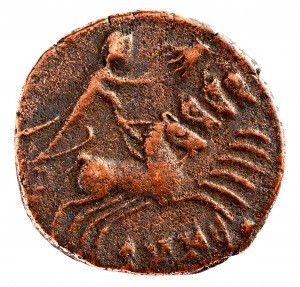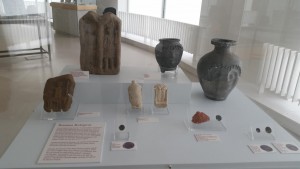Among all the ancient coins of the Roman Empire, there is one legendary bronze that literally bears “the Hand of God.” That’s right, when Emperor Constantine the Great died in 337 AD, his sons decreed that posthumous bronze coins be struck which clearly depict Constantine being flown up to heaven in a Roman chariot (called a Quadriga) pulled by four horses. The Quadriga was a chariot drawn by four animals (usually horses) which was the customary vehicle for triumphant processions honouring the victorious, as well as being used in the funeral ceremony of an Emperor’s consecration.
Struck around A.D. 337 by the sons of Constantine the Great, this ancient commemorative coin honors their father – one of Rome`s greatest emperors! Believing that a holy vision he saw before the Battle of Milvian Bridge was responsible for his victory, Constantine adopted Christianity as Rome`s official religion. Eventually, the emperor converted to Christianity himself. The obverse depicts the veiled head of Constantine, while the reverse shows him in a chariot, heaven-bound toward the welcoming hand of God.
On this particular bronze of Constantine the Great, however, it can be suggested from the truly amazing coin is that the right hand of God himself is shown coming down from heaven to welcome the great Emperor home! This is significant in that it represents the first depiction of the Christian God on a Roman coin. Known examples of this amazing coin bear dates from 337 – 340 BC. The obverse of this coin contains the veiled head portrait of the deified Emperor Constantine.
References
http://www.littletoncoin.com/webapp/wcs/stores/servlet/Product5%7C10001%7C10001%7C-1%7C54037%7C10267
http://www.govmint.com/pages/the-hand-of-god-roman-bronze

